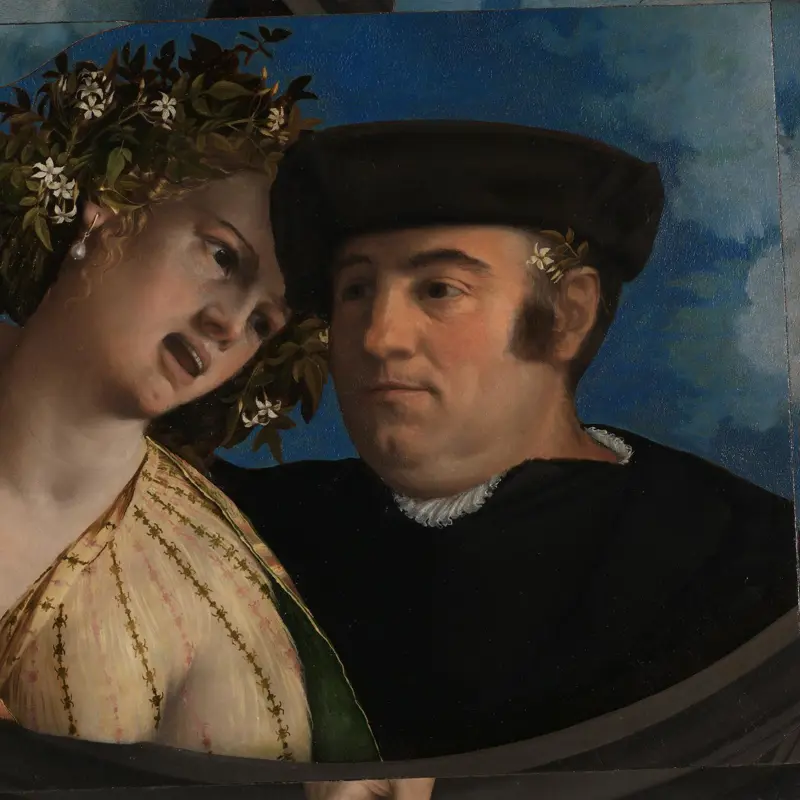Follower of Dosso Dossi, 'A Bacchanal', about 1525
About the work
Overview
Followers of Bacchus – the Roman god of wine and fertility – feast, drink and make love in the countryside. The painting resembles the great bacchanal scenes that were commissioned from the leading painters of Venice by Alfonso I d‘Este, Duke of Ferrara, for the Camerino d’Alabastro (Alabaster Room) in his palace, in particular Bellini’s Feast of the Gods (National Gallery of Art, Washington) and Titian’s Bacchanal of the Andrians (Prado, Madrid). However, the absence of the pigment ultramarine blue, which features consistently in the paintings for the Camerino, makes it highly unlikely that this painting could have hung among them, as has sometimes been suggested. The blue pigment in the sky here is azurite.
It is not known who painted this picture. although it is reminiscent of the work of Dosso Dossi and may well be by a follower. It may have been commissioned by a Ferrarese patron who wanted an original work inspired by Bellini and Titian’s Bacchanals for Alfonso I d'Este.
Key facts
Details
- Full title
- A Bacchanal
- Artist
- Follower of Dosso Dossi
- Artist dates
- about 1486 - 1542
- Date made
- about 1525
- Medium and support
- oil on canvas
- Dimensions
- 140.9 × 168.2 cm
- Acquisition credit
- Bequeathed by Sir Lionel Faudel-Phillips, 1941
- Inventory number
- NG5279
- Location
- Not on display
- Collection
- Main Collection
- Previous owners
Provenance
Additional information
Text extracted from the ‘Provenance’ section of the catalogue entry in Giorgia Mancini and Nicholas Penny, ‘National Gallery Catalogues: The Sixteenth Century Italian Paintings’, vol. 3, ‘Bologna and Ferrara’, London 2016; for further information, see the full catalogue entry.
Exhibition history
-
2013Dionysus. Intoxication and EcstasyBucerius Kunst Forum3 October 2013 - 12 January 2014Staatliche Kunstsammlungen Dresden8 February 2014 - 10 June 2014
Bibliography
-
1962Gould, Cecil, National Gallery Catalogues: The Sixteenth Century Italian Schools (excluding the Venetian), London 1962
-
1987Gould, Cecil, National Gallery Catalogues: The Sixteenth Century Italian Schools, London 1987
-
2001
C. Baker and T. Henry, The National Gallery: Complete Illustrated Catalogue, London 2001
-
2016Mancini, Giorgia, and Nicholas Penny, National Gallery Catalogues: The Sixteenth Century Italian Paintings, 3, Bologna and Ferrara, London 2016
About this record
If you know more about this work or have spotted an error, please contact us. Please note that exhibition histories are listed from 2009 onwards. Bibliographies may not be complete; more comprehensive information is available in the National Gallery Library.



